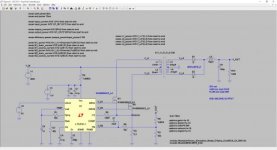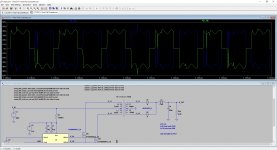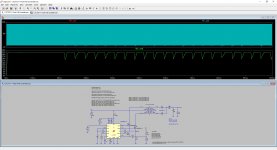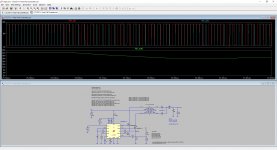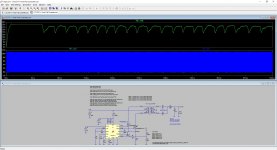I'm designing an offline (230V) push pull converter to produce ~32V at 6A. I'm using the LT3721-1 controller and I have a simulation running in LTSpice. I don't have much experience with power electronics so I'm hoping someone here may be able to help with a lack of understanding. My issue is that under full load the output voltage does not regulate, instead it sags at around 28V. The duty cycle is at maximum - the converter cannot supply enough power. I'm not sure where the bottle neck is in terms of power throughput. Leading edge blanking is set to about 200ns (transformer current spikes measured at about 110ns). The current sense resistor is set low enough that the cycle by cycle current limiting does not occur, and that the duty cycle is at maximum under full load.
The reference for the voltage feedback error amplifier is 1.2V - and the voltage on the feedback pin is low at around 1.1V. The controller is trying to increase output power through maximum duty cycle but there is bottle neck somewhere.
The transformer currents are greatest during startup and drop back during steady state. So the transformer is capable of more power throughput. The inductance values are based on 100:10 turns ratio on the Ferroxcube ETD49/25/16-3C90 core.
Where is the problem?
Circuit schematic attached.
The reference for the voltage feedback error amplifier is 1.2V - and the voltage on the feedback pin is low at around 1.1V. The controller is trying to increase output power through maximum duty cycle but there is bottle neck somewhere.
The transformer currents are greatest during startup and drop back during steady state. So the transformer is capable of more power throughput. The inductance values are based on 100:10 turns ratio on the Ferroxcube ETD49/25/16-3C90 core.
Where is the problem?
Circuit schematic attached.

